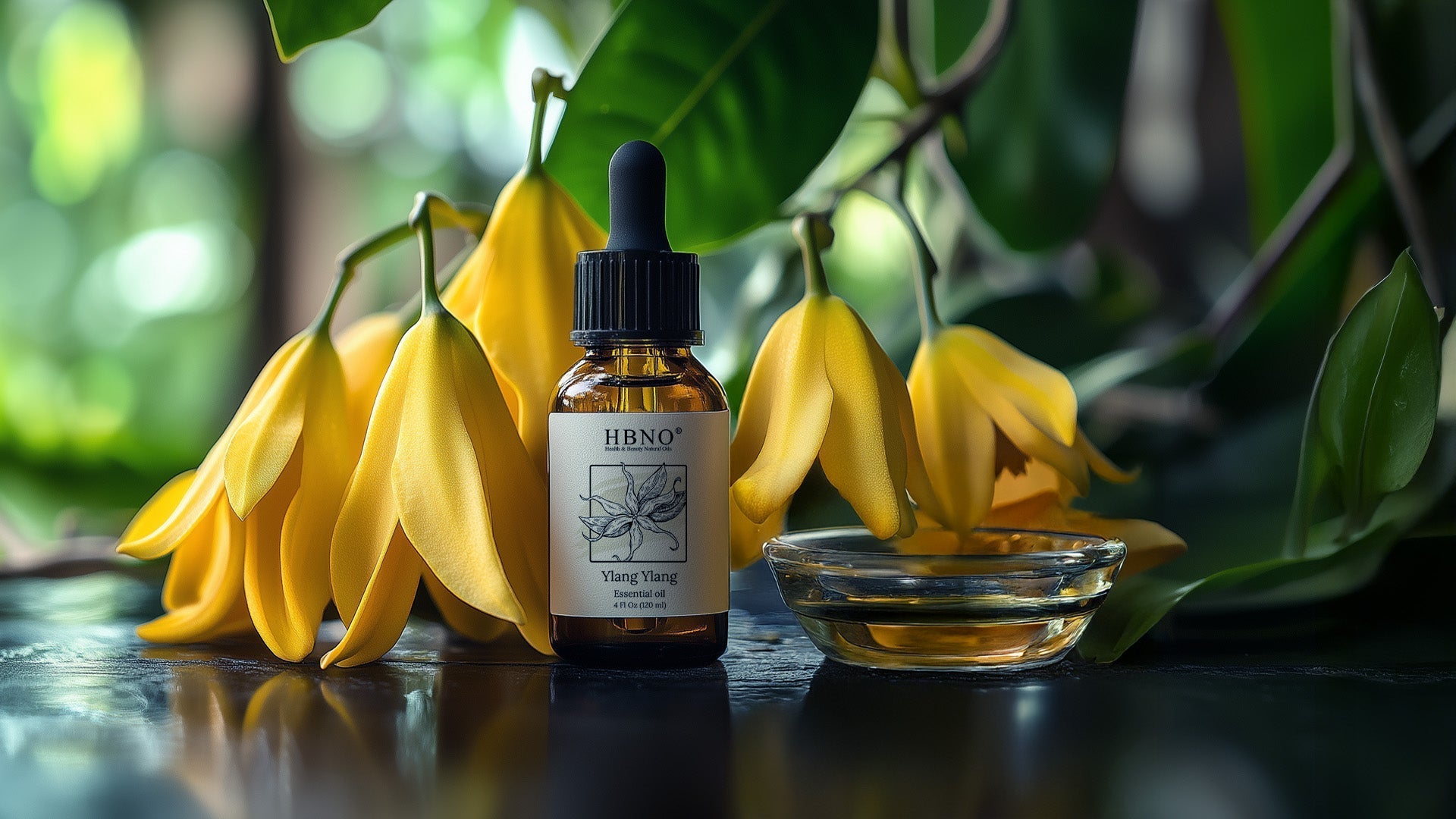
Ylang Ylang #3 Oil vs Ylang Ylang Oil: Key Differences
Ylang ylang oil is frequently explored among essential oils for its wide range of uses in perfumery, beauty blends, and DIY projects. But when people come across different grades or types of this oil like ylang ylang #3 they might wonder: Is there a difference between ylang ylang #3 oil vs ylang ylang oil?
The short answer is yes. These two versions may come from the same flower but differ in how they're distilled, their aroma profile, and their typical use cases. Understanding what makes these variations distinct might help individuals make more informed choices based on their personal preferences, application methods, or project needs.
Let's explore how ylang ylang #3 essential oil may differ from what's generally labeled simply as ylang ylang oil.
Ylang Ylang #3 Oil vs Ylang Ylang Oil: The Core Differences
While both may share the same source, Cananga odorata, the way they're extracted and the point at which they're collected during distillation could impact their composition and character. When comparing ylang ylang #3 oil vs ylang ylang oil, several differences may emerge based on the method of distillation, scent profile, and possible usage contexts:
-
Distillation Time: This essential oil is typically collected later in the distillation process. The oil labeled simply as "ylang ylang oil" might refer to the complete distillate or to an earlier fraction like "ylang ylang extra" which is collected during the first hour or two.
-
Aromatic Strength: The scent of ylang ylang #3 oil might be considered heavier or deeper. It often carries more earthy or woody undertones. In contrast, earlier fractions or complete ylang ylang oil may carry a more vivid floral character that various people describe as bright or slightly fruity.
-
Consistency and Color: Ylang ylang #3 oil may be thicker and darker in color. Ylang ylang essential oil, when labeled generally, could vary in viscosity and hue depending on its specific fraction or blend.
-
Common Uses: Ylang ylang oil might be commonly used in high end perfumes, hair oils, or aroma sprays. Ylang ylang #3 oil, on the other hand, may be preferred in soaps, candles, and incense sticks due to its bolder notes and cost-effectiveness. You may find both oils in various derma applications.
-
Price Range: Because ylang ylang #3 essential oil is collected later in the process and may be more abundant, it could be less expensive than the early fractions. Those looking for affordability without sacrificing floral complexity may consider this version.
-
Popularity Among Users: Some people might favor the fuller-bodied profile of ylang ylang #3 oil for DIY candles or room sprays. Others may lean toward the lighter, more delicate scent of early fractions for personal care products.
Multiple Grades of Ylang Ylang Oil
The distillation process of ylang ylang is often segmented because different aroma profiles are released at different times. Early fractions, like ylang ylang extra, may evaporate more quickly, making them more suitable for fine perfumery.
Later fractions like ylang ylang #3 oils are collected after prolonged steaming and may contain compounds that develop later, contributing to a denser aromatic character. This grading system might exist primarily to cater to the needs of industries ranging from cosmetics to aromatics. Depending on the desired outcome, various producers may choose a particular fraction over the complete oil.
Choosing Between Ylang Ylang #3 and Other Grades
There may be a number of ways people may use both types of ylang ylang essential oil for multiple needs. But, one oil may suit better for certain purposes than the other. Also, the result may vary from person to person. So, when deciding between ylang ylang #3 oil vs ylang ylang oil, people might consider the following factors:
-
Project Type: People may prefer ylang ylang oil for hair care products, perfumes or delicate facial blends. For body oils, soaps, or diffusers, ylang ylang #3 essential oil may work better due to its long-lasting scent.
-
Scent Preferences: Those who appreciate deeper, richer aromas may find ylang ylang #3 oil is more appealing. In contrast, people who like lighter or fruitier floral notes may lean toward complete ylang ylang oil or the extra grade.
-
Budget Considerations: If cost plays a role, ylang ylang #3 oil might offer a more economical option without straying too far from the original floral essence.
-
Formulation Compatibility: In products where a strong base note is desired, ylang ylang #3 oil may blend more seamlessly. It might also help balance lighter notes when building fragrance layers in candles or oil-based products.

Popular Applications of Ylang Ylang #3 Oil
Although not limited to any one use, ylang ylang #3 essential oil might be found in:
- Cold process soaps
- Hair masks
- Solid perfumes
- Room mists
- Candle making
- Scented sachets
Its robust scent profile may allow it to hold its fragrance longer in heat-exposed products like candles or incense sticks.
Conclusion
The difference between ylang ylang #3 oil vs ylang ylang oil mainly lies in the distillation process and the resulting scent profiles. While both come from the same flower, ylang ylang #3 essential oil is collected later and may carry a denser, more intense aroma. On the other hand, general ylang ylang oil could refer to any stage or a complete distillate, offering a brighter and possibly more versatile scent.
Many people exploring fragrance or formulation work might try both to determine which suits their preferences or blends best with other ingredients. Ultimately, the choice may come down to the scent one prefers, the project at hand, and the cost-effectiveness of the oil being used. At HBNO, you can find ylang ylang essential oil in premium quality along with other top essential oils.